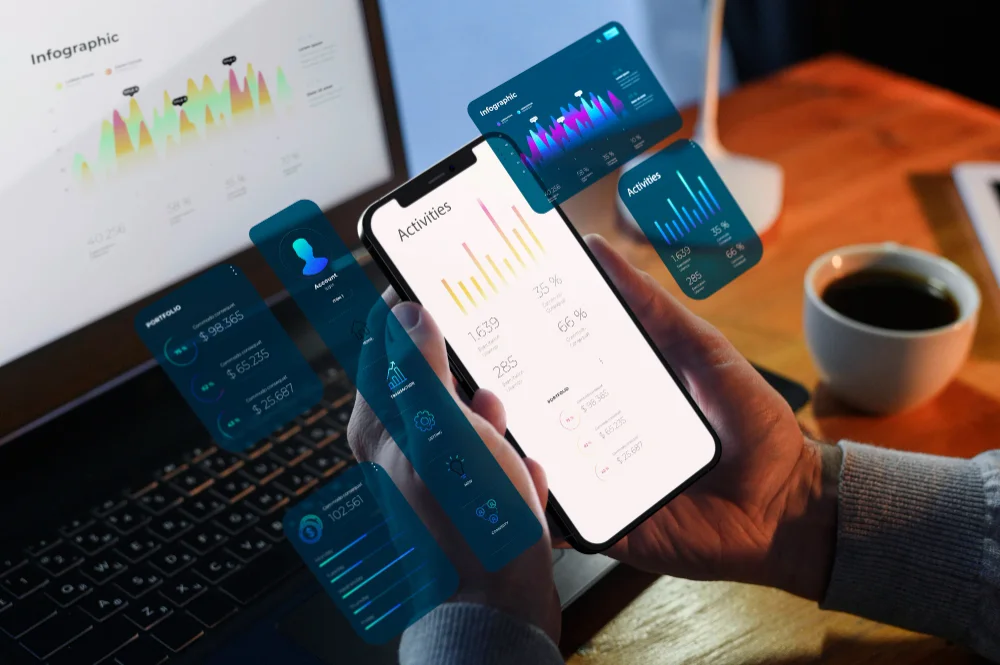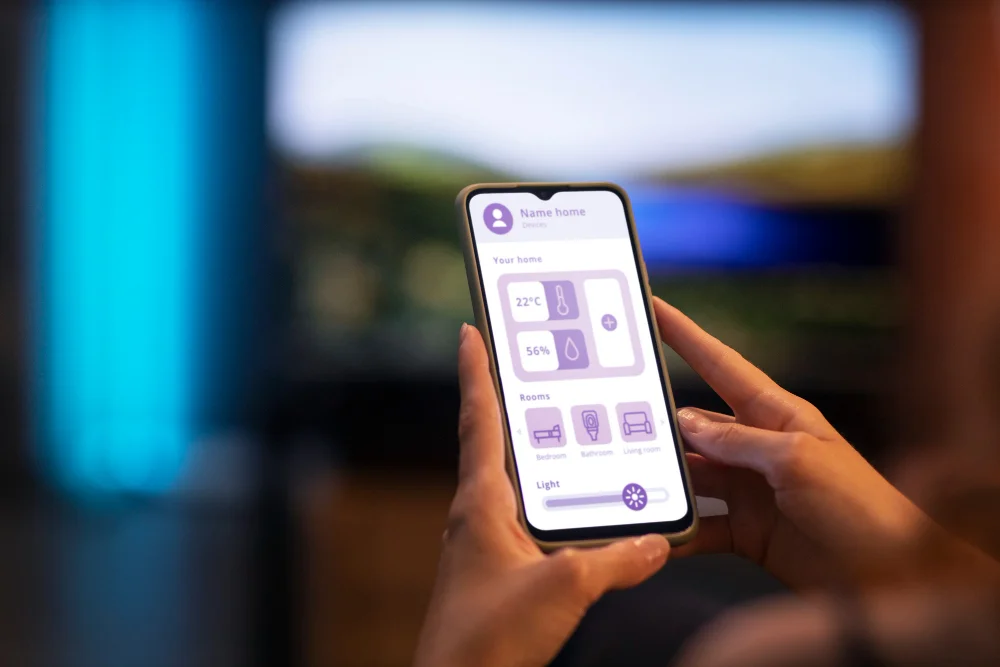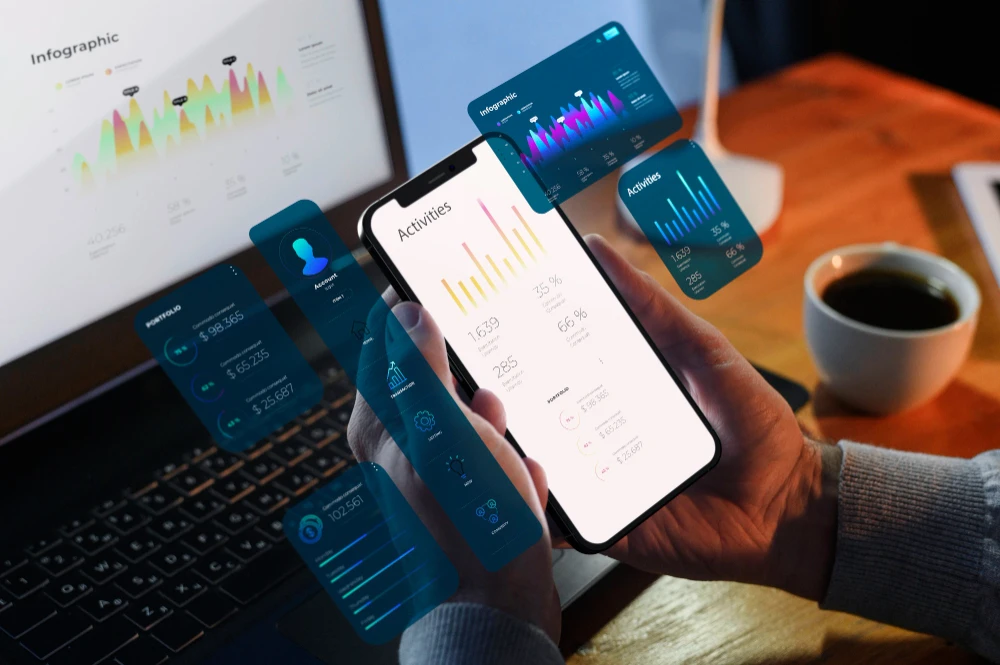Share Posts

How to Create an iOS App in 2024?
46
5194
103
Building a mobile application in an Apple operating system from scratch involves various aspects like technical skills, usage of technologies, determining the objectives, app development, testing, deployment, and marketing.
Even though Android devices are widely used across the world, Statista estimated that there are over 500 million devices that use iOS. It has relatively fewer users when compared to the Android operating system, but Apple ensures the fastest and most reliable performance in their mobile applications. This increases the user engagement rate and app installation on iOS devices.
In this article, we will discuss how to build an iOS app from scratch. The coding and development phases are explained in general. If you have no technical expertise you can talk to our experts at Maticz about your mobile app idea.
The Basic Requirements for Developing iOS Applications
Before starting with the app development, you must get some basic requirements checked off from the list. These requirements can differ from developer to developer based on their experience.
Get a Mac
To get started with the iOS app development, you should get a Mac that operates on an Intel processor with a clocking frequency of 2.3GHz, and an i5 processor with 8GB RAM (Apple SDK requires more RAM). This requirement is enough for both beginners and intermediates.
Create an Application Developer Account
To create a developer account you can go to Apple’s developer website, and register for the new account. After filling in your personal information you will have an Apple ID and can have access to download the latest version of Xcode.
Install Xcode
Xcode is an IDE (Integrated Development Environment) that is provided by Apple, which is the only tool you need to install to develop iPhone and iPad applications. The Xcode has iOS SDK, compiler tools, frameworks, code resources, dependencies, and build settings.
Knowledge of Objective-C or Swift
Knowing Objective-C or Swift is essential for iOS app development if you are a developer. Objective-C is a programming language used to develop apps on macOS and iOS. Swift is the latest programming language that is dedicated to iOS development which offers many modern development features.
Understanding the Design and Development Guidelines of Apple
Mobile applications are changing the world each day. Thus App Store has grown into an exciting ecosystem for budding and experienced developers. Understanding Apple’s Review Guidelines will help you quickly get through the review process while submitting your app to the App Store. Read App Store Review Guidelines from Apple.
A Brief Overview of the Guidelines for App Store Reviews
Safety
Your app must be safe to download for the users. Ensure that it doesn’t damage the devices that are used. Make sure your app is safe for users and provides an enjoyable user experience by avoiding unpleasant or distressing content.
Performance
Before submitting your app, make sure it has been tested for stability and performance issues on various Apple devices. Check the hardware and software requirements for your app to work flawlessly. For optimized performance, you can include Sirikit and shortcuts for the app.
Business
With Apple App Store you can monetize your app in multiple ways. The pricing of an app is up to you, but if the app is overly expensive and cheats user money, Apple can reject your submission. You can also explain your app in metadata and App Review notes for a better understanding of Apple's submission process.
Design
Simple, elegant, inventive, and user-friendly products are highly valued by Apple customers. Your app must follow these requirements to be accepted by the App Store. Additionally, keep in mind that you should continue to update your app even after it has been authorized to make sure it is still useful and interesting to both present and existing users.
Legal
The developed apps must abide by all the legal requirements based on your respective development locations. Though it is a complicated process, Apple makes sure its products are legally free to be used by its users worldwide.
After submitting your app to the App Store, the below-listed things should be kept in mind.
(i) The review process can vary for each app.
(ii) Expedite Requests can be made if you have timing concerns.
(iii) Release Date can be scheduled.
(iv) Rejection appeals can be made through App Store Connect.
(v) Bug Fix Submission for an existing app cannot be delayed because of guideline violations unless it is regarding the safety or legal issues.
Stages Involved to Create an App on iOS
There are multiple stages involved in creating an iOS application, Yet we have categorized them into four basic steps for better understanding for readers. They are,
Design
The UI and UX of the mobile app are discovered in this phase. It involves creating wireframes and design mockups using Adobe, Figma, and various other design tools.
Development
The prominent stage of Mobile app development is coding and this can be get started with the installation of Xcode.
(i) The developers can either use Objective-C or Swift as their programming language.
(ii) The UI and UX are converted into a real-time interface in this stage.
(iii) All the features and functionalities are carried out by the developers.
Testing and Debugging
The performance and scalability issues are rigorously tested during this stage. Software testing ensures the optimum performance for the users after deployment. The bugs and glitches can be resolved before submitting to the App Store.
Submitting
You should make sure of the seamless working of your app across various Apple devices before submitting it to the App Store. You can also launch your app to a registered set of users for beta testing using TestFlight before the final release.
How to Build an iOS App From Scratch?
Step 1: Install Xcode
To begin with, the iOS app development, install Xcode from the App Store or Apple’s Developer Website. The installation process can take up to 25 - 30 minutes.
Step 2: Start Your Project
After the Xcode installation, you must create a new project to get started.
(i) Open Xcode
(ii) Navigate to File>>New>>Project
(iii) In the next screen, Select App from the various other options displayed.
(iv) Select the App Name of your preference.
(v) Now you can select either Objective-C or Swift.
(vi) Save the Location where you want to save the file and continue to the next.
Step 3: Code Your App
If you have selected the Storyboards as your UI, you can start by simply dragging and dropping the elements into the canvas and editing them. If you choose to Code, you start writing the code either on Objective-C or Swift.
Note: To write code in Swift, you must create a viewController.swift file and create a new class, to begin with.
Coding with Swift
1. Diving deep into coding is a whole new topic for another day but you can,
2. Set up the ViewController class
3. Connect with nib files or outlets to Storyboard, so that you can use them in your code
4. Set up actions by connecting them by nib files or IBAactions to the Storyboard. These actions can be triggered by user interactions.
5. Customize and implement data resources to the ViewController class. You can also add any additional methods before finalization.
Step 4: Connect with UI
After completion of coding, you can navigate to ‘main. storyboard’. You can search for labels and resize them by dragging the squares. Connect the label to Storyboard by right-clicking the ViewController. Now that you can connect the UI to the backend coding in the ViewController.
Step 6: Test Your iOS App
With the in-built testing simulator in the Xcode, you can test your app on various Apple devices and operating system versions.
Step 7: Debugging iOS
The Xcode debugger can identify if there are any bugs or issues in your coding. The breakpoints allow you to check for errors for specified sections if your code is a big app. You can also have debugging logs for historical data.
Step 8: Submitting Your iOS App
After a series of testing, and resolving the bugs you can submit your app for Apple Review. To submit an app to the App Store, you must set up an Apple Developer Account.
Let’s Develop Your iOS App Together
Having the plan to develop a mobile app is an exciting idea. Now you get an idea about the process involved in developing an iOS app. It might be an overwhelming and complex process because of the technical difficulties in it.
Maticz, the leading iOS development company has a team of experienced developers, who can work together to create the best possible user experience for your customers. Our developers have a deep knowledge of the iOS platform and its capabilities, so you can be sure that your app will be designed with the latest technologies and trends in mind. We also provide ongoing support after launch, making sure your app is always up-to-date with the latest features and bug fixes. Let's get started on building your dream iOS app today.
Tap Into the Future
The latest insights, posts, and project updates - straight to your inbox.




